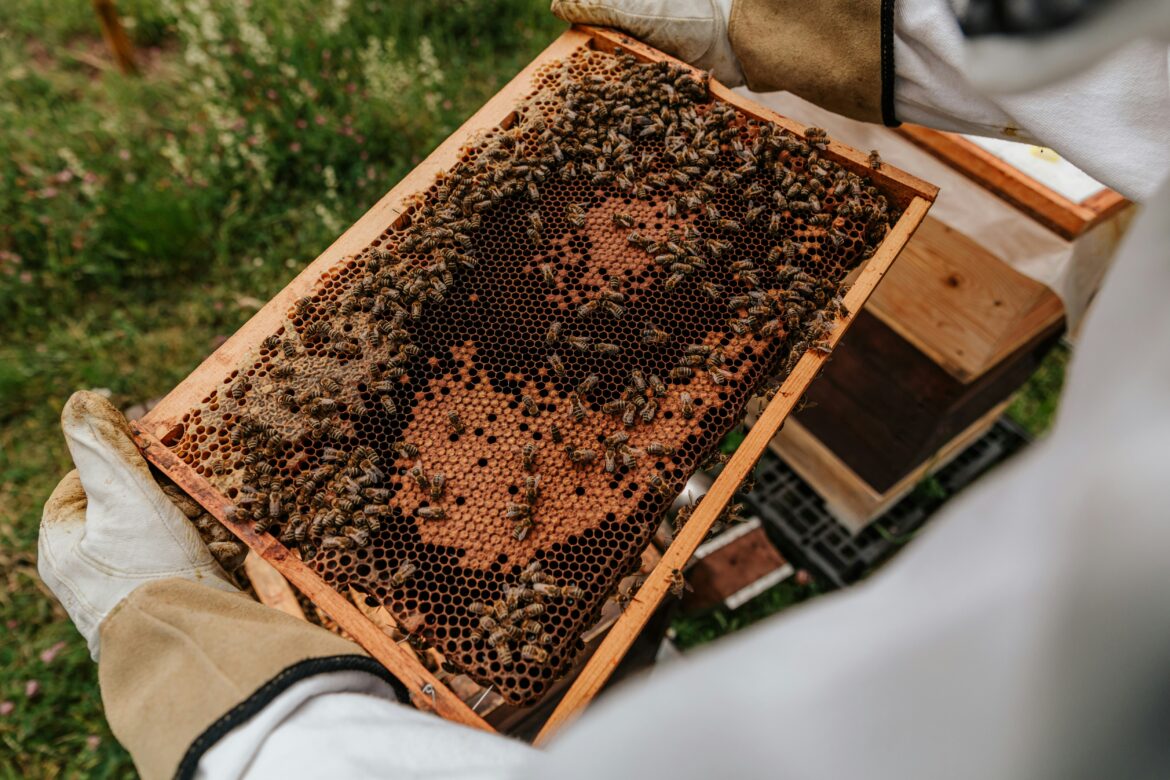Why Bees Matter More Than Ever
Bees are responsible for pollinating over one-third of the world’s food crops—including fruits, vegetables, nuts, and even coffee.
In recent years, bee populations have suffered from pesticide use, habitat loss, disease, and climate change.
“Colony Collapse Disorder” and declining wild bee species threaten global food security and biodiversity.
Urban beekeeping is emerging as an unexpected hero—cities are now havens for honeybees, often healthier than their rural cousins.
What is Urban Beekeeping?
Urban beekeeping means raising bee colonies in cities—on rooftops, balconies, community gardens, and even corporate office buildings.
Hives can be found on hotels in New York, department stores in Paris, schools in London, and apartment blocks worldwide.
City bees often thrive due to diverse plantings (parks, gardens, tree-lined streets), fewer pesticides, and creative community stewardship.
Urban hives produce unique, hyper-local honey—sometimes with surprising flavors from local flora.
Why Cities Are Good for Bees
Diverse forage: Parks, window boxes, botanical gardens, and even weeds offer a wider buffet than monoculture farms.
Reduced pesticides: Many urban centers regulate or limit chemical spraying compared to rural agriculture.
Microclimates: Cities are often warmer and protected from harsh winds, allowing longer foraging seasons.
Community protection: Beekeepers, gardeners, and eco-activists advocate for bee-friendly policies and habitat.
The Urban Beekeeping Movement: Who’s Getting Involved?
Rooftop hives: Chic hotels, tech campuses, restaurants, and schools use hives for sustainability, education, and marketing.
Community gardens: Neighborhoods start shared hives—creating pollinator corridors and honey cooperatives.
Artists and designers: Creative hives and bee hotels, public art projects, and innovative bee-friendly urban planning.
Home hobbyists: Apartment dwellers and backyard gardeners raise small hives, often supported by local clubs.
The Sweet Side: Honey, Wax, and More
Urban honey is small-batch, seasonal, and “single origin”—its flavor reflects the city’s botanical diversity (think lavender, linden, or wildflower).
Beeswax is used for candles, balms, food wraps, and even urban art.
Some beekeepers collaborate with local chefs and brewers on “hive-to-table” menus, craft beer, and honey-based cocktails.
Pollination increases urban harvests of fruits, herbs, and vegetables—benefiting all city dwellers.
Sustainability and Education
Urban beekeeping raises awareness of biodiversity, pollinator health, and sustainable food systems.
School and youth programs teach biology, ecology, responsibility, and the interconnectedness of nature and city life.
Many urban beekeepers run workshops, tours, and public tastings—turning hives into hubs for learning and connection.
Challenges and Controversies
Bee safety: Managing hives in crowded cities means extra care to prevent stings and address allergy concerns.
Overcrowding: Too many hives in one area can stress local bee and wild pollinator populations—balance is key.
Regulation: Laws vary by city—permits, hive numbers, and location restrictions can affect beekeepers.
Wild pollinators: Focus on honeybees must not overshadow the importance of native bees and other pollinators.
The Tools and Techniques of the Urban Beekeeper
Hive styles: Langstroth, top bar, and even high-design hives for urban environments.
Protective gear: Modern suits, veils, and smoker tools keep beekeepers (and neighbors) safe.
Remote monitoring: Tech-enabled hives with sensors for temperature, weight, and bee health.
Organic practices: Many urban beekeepers avoid chemical treatments, using natural pest management and hive health strategies.
How to Get Started
Research local laws: Check city regulations and join a local beekeeping association or club.
Take a class: Many community gardens, universities, and bee groups offer beginner courses.
Start small: Even a single hive can make a difference—partner with a community garden or local business if space is tight.
Plant pollinator gardens: Even if you can’t keep bees, grow native flowers, avoid pesticides, and create bee-friendly spaces.
Support urban honey: Buy local honey, beeswax products, or sponsor a rooftop hive.
Seven-Day Urban Beekeeping “Pollinator Challenge”
Day 1: Visit a local urban beekeeper, market, or community garden—ask about their honey and bees.
Day 2: Taste local honey—compare it to supermarket honey and note the flavors.
Day 3: Plant flowers or herbs that attract pollinators on your balcony or yard.
Day 4: Watch a documentary or video on urban beekeeping—learn about city bee heroes.
Day 5: Attend (or sign up for) a beekeeping class or workshop.
Day 6: Share a photo or story about bees on social media—raise awareness and inspire others.
Day 7: Support pollinator projects, donate to bee research, or commit to using fewer chemicals in your own garden.
Why Urban Beekeeping Matters
Urban beekeeping is a symbol of resilience, creativity, and community—proving that even in concrete jungles, nature can thrive.
Bees are vital to our food, culture, and ecosystems—by helping them, we help ourselves.
Whether you’re a city dweller, gardener, teacher, chef, or entrepreneur, the urban beekeeping movement offers a sweet path to sustainability and connection.
🎧 Listen While You Learn: Our Spotify Playlist
Set the mood for your next adventure or creative project:
👉 https://open.spotify.com/user/31lk5hi3o22vg5xhat2ioqxq5b4i
✨ Learn and Explore on Our Blog
Read more on green trends, urban innovation, and global ideas at:
👉 https://theintelligence.info

